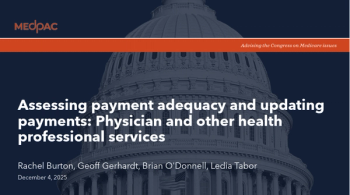
- January 10, 2019 edition
- Volume 96
- Issue 1
What primary care physicians can do about rising rates of obesity
Overcoming obesity is a daunting goal, especially when patients hear that carrying too much weight is becoming a societal norm in some places. This list should give PCPs useful guidance as they communicate with obese or at-risk patients about effective ways to trim down.
Primary care physicians (PCPs) have a responsibility to their patients to help them stay healthy and safeguarded against the latest threats to their well-being. Therefore, it's crucial for them to tackle the growing problem of obesity. A recent study of obesity prevalence indicated two in five American adults are obese, and the same is true for about 18.5 percent of kids. In addition, the percentage of obese patients is rising in both the adult and child populations.How can physicians respond if their patients are obese or at risk for obesity?Family doctors in the U.S. were polled about 10 chronic disorders, including obesity. They reported that the treatments for obesity were less effective than all but those for drug addiction. These findings suggest a need for PCPs to rethink their strategies when assisting obese patients. The following suggestions could help them do that.
Articles in this issue
almost 7 years ago
The benefit of flexible patient payment optionsalmost 7 years ago
EHR market consolidation and the impact on physiciansalmost 7 years ago
Your voice: Lowering the cost of a medical educationalmost 7 years ago
Getting paid in 2019almost 7 years ago
Eliminate claim denials for medical necessityalmost 7 years ago
Asking about opioid use now part of Medicare welcome and annual visitsalmost 7 years ago
Treating obesity: How to individualize careover 7 years ago
Physician moonlighting doesn’t mean major travel burdensNewsletter
Stay informed and empowered with Medical Economics enewsletter, delivering expert insights, financial strategies, practice management tips and technology trends — tailored for today’s physicians.
















